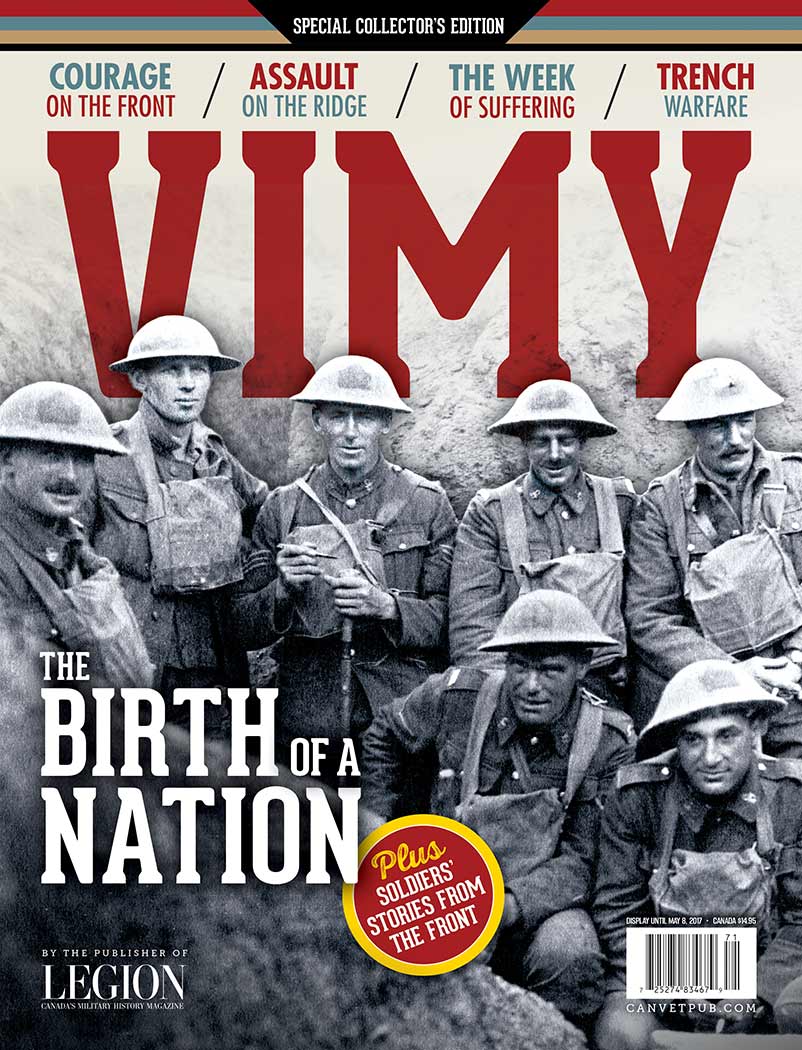
In February 1915, the Canadian Division made its way across the English Channel, and in April, the Canucks found themselves in Belgium near the historic town of Ypres. The chlorine gas attack unleashed by the Germans on April 22 and 24 tested the division and, while it successfully resisted the advancing Germans, the casualties were shocking to those at the front and at home—more than 6,000 in a few days of fighting, including some 1,300 taken prisoner.
This was a real war, and the Canadians had to learn how to fight it. A string of deadly engagements followed—Festubert, the St. Éloi craters, Mount Sorrel—each producing its toll, while new formations formed in Canada and proceeded overseas. This was not the Fenian raids or the South African War; this was industrialized warfare in which artillery, machine guns, barbed wire, gas and death reigned supreme.
By the autumn of 1916, the Canadian Corps had three divisions fighting on the Somme with a fourth just reaching the front. In all, some 300,000 men had enlisted at home, and the Canadian Expeditionary Force (CEF) in France and Flanders was approaching a strength of 100,000 officers and men. The Corps’ General Officer Commanding since June was a 53-year-old British cavalry officer of substantial distinction, Lieutenant-General Sir Julian Byng, who had succeeded a British officer of much less distinction, E.A. Alderson. He thought the Canadians had the potential to be first-class troops, and he knew that Hughes’ political patronage appointments had to be stopped. Shortly after Byng took command, Hughes tried to get his son put in command of the Third Division, but Byng flatly refused. That was good for morale, and so was Byng’s leadership, his genuine concern for the soldiers, and his training regimen.
The terrible struggle on the Somme had come to an end. The Canadians had a name now, and under General Byng they would move into the Arras sector just to the west of a long German-held ridge that ran north and south across the front. Vimy Ridge, it was called.
Nations choose symbols, and Vimy is an important one for Canada. Tens of thousands have returned to the site of the battlefield in formal and informal pilgrimages. To stand at the memorial on Vimy Ridge in France is to feel the weight of history, the echoes of the clash of battle and the spirit of those who served and sacrificed.
The hard-fought battle of Vimy Ridge is sometimes called “the birth of the nation.” It was there in April 1917 that the Canadian Corps fought together for the first time in the First World War and achieved success where others had failed.
The Canadian Corps was led by Lieutenant-General Sir Julian Byng. Byng was a good soldier, rumpled and weary looking, gruff but friendly, who soon endeared himself to the soldiers. Within months of his appointment, the men had begun to call themselves The Byng Boys, a play on Byng's name and the popular 1916 London musical The Bing Boys are Here.
To relieve the pressure on France, the British launched a drive on the Somme River on July 1, 1916. The fighting lasted into November and the slaughter was horrendous, with neither side gaining much ground but at a great cost in soldiers and blood.
In the past, soldiers moved as their battalions or brigades directed them; now each man was to know his task, see the air photographs and maps, and understand his platoon’s role. The platoon leader would be the man responsible for deploying his sections.
The guns were key to the attack on Vimy Ridge. A careful bombardment was greatly aided by the continuous aerial reconnaissance, information from observation balloons, sound-ranging and flash-spotting to locate the enemy artillery, and the careful collection of intelligence from prisoners.
The High Command’s plan was that the German armies would stay on the defensive in 1917, recovering from the costly struggles on the Somme and at Verdun. All resources possible were poured into fortifying the army’s position in France and Flanders.
The attack jumped off at 5:30 a.m. on April 9, under the cover of a fierce artillery barrage, the Canadians moving with snow, sleet and rain blowing into the German lines. Mines laid under the German lines exploded a few seconds after zero hour.
Where Vimy mattered the most was in its effect on the men of the Canadian Corps. The four divisions had fought together that Easter Monday for the first time, and that mattered. It was a Canadian victory, a battle won by soldiers who had begun to think of themselves as Canadian.